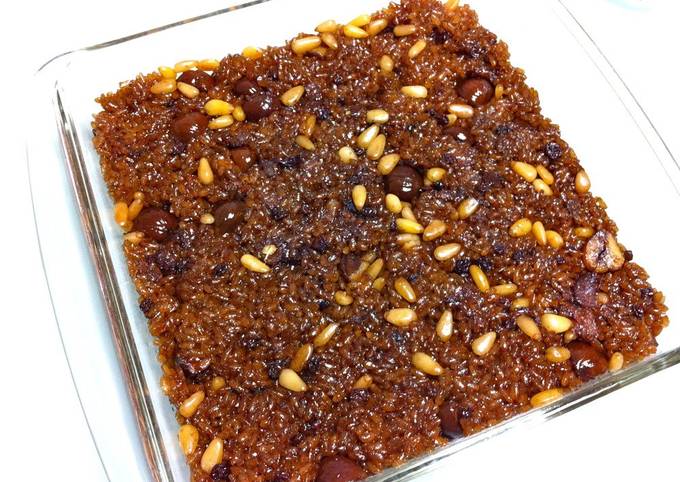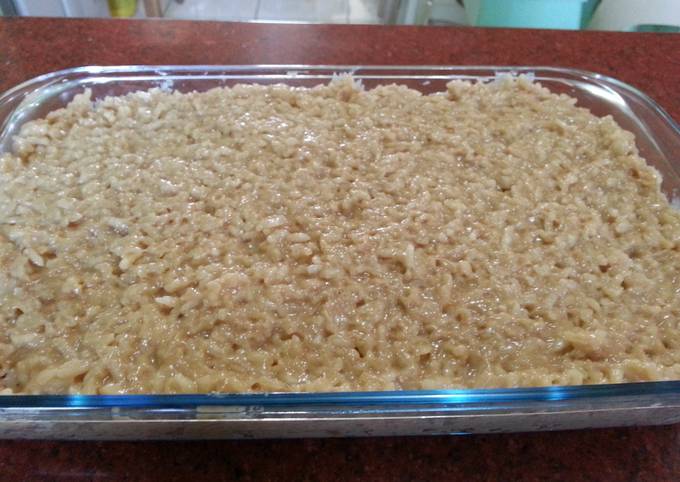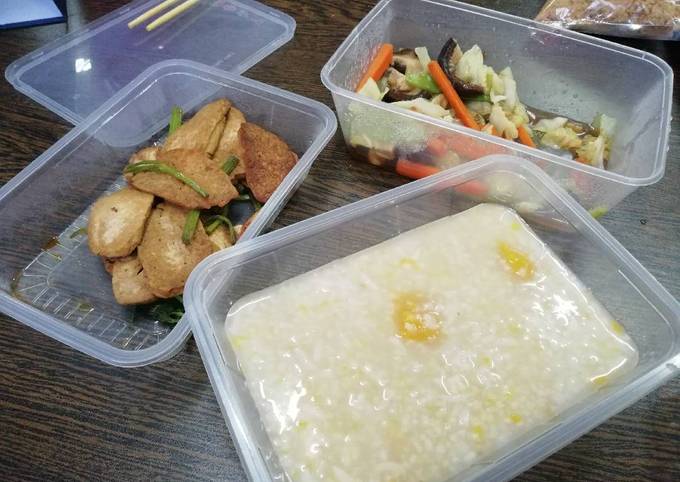
Hello everybody, I hope you’re having an incredible day today. Today, I’m gonna show you how to prepare a special dish, yaksik - traditional korean sweet rice. One of my favorites food recipes. For mine, I am going to make it a bit tasty. This is gonna smell and look delicious.
Add to the rice cooker bowl and add enough water to just cover. Add the soy sauce, sesame oil, salt, sugar, luo han guo and cinnamon. These amounts are will give you the typical Korean flavor (rich!), so reduce the amounts of the seasons for a milder version. While the rice is soaking, prepare a bowl or a container to mix the other ingredients.
Yaksik - Traditional Korean Sweet Rice is one of the most popular of current trending foods in the world. It is appreciated by millions every day. It’s simple, it’s quick, it tastes yummy. Yaksik - Traditional Korean Sweet Rice is something which I’ve loved my whole life. They are nice and they look wonderful.
To begin with this particular recipe, we must prepare a few components. You can cook yaksik - traditional korean sweet rice using 10 ingredients and 13 steps. Here is how you can achieve it.
The ingredients needed to make Yaksik - Traditional Korean Sweet Rice:
- Make ready 1 kg mochi rice (sticky rice/glutinous rice)
- Get 3 Tbsp soy sauce
- Prepare 2 Tbsp sesame oil
- Make ready 2 Tbsp salt
- Get 50 grams luo han guo
- Get 30 grams beet sugar or brown sugar
- Prepare 1 dash cinnamon
- Make ready 15 peeled sweet chestnuts
- Make ready 70 grams pine nuts
- Make ready Dates or other dried fruits
Many Koreans eat Yaksik as a healthy alternative to cookies and chips. It's often served at weddings and parties. And it also can be an excellent alternative to granola bars. In traditional Korean cuisine, honey was commonly referred to as medicine or "yak"(약) for its health benefits.
Instructions to make Yaksik - Traditional Korean Sweet Rice:
- Rinse the mochi sticky rice and pre-soak overnight or for at least 5 hours.
- The following day, drain it in a fine mesh sieve.
- Add to the rice cooker bowl and add enough water to just cover.
- Add the soy sauce, sesame oil, salt, sugar, luo han guo and cinnamon. These amounts are will give you the typical Korean flavor (rich!), so reduce the amounts of the seasons for a milder version.
- While the rice is soaking, prepare a bowl or a container to mix the other ingredients. It is common to add chestnuts, pine nuts, and jujubes, but you could also use dried fruit and nuts.
- Dry roast the pine nuts in a frying pan.
- Cut the chestnuts in half, then remove them from their shells. It is easy to peel the chestnuts if you first cut them in half with a knife, make a small cut with scissors, then peel. Remove the inner skins, too.
- Add the dried fruit of your choice to the rice cooker and mix them into the rice. Top the mixture with the chestnuts and the pine nuts. Set the rice cooker to the "mochi rice" setting and cook.
- It's done…
- Let the rice steam a bit. It should look like this when mixed.
- Pack the sweet mochi rice into a container or cake pan (to make it easier to serve).
- Cut the rice into desired sizes, then serve.
- If you don't plan to serve it right away, cover it with plastic wrap and freeze. Defrost at room temperature before serving.
And it also can be an excellent alternative to granola bars. In traditional Korean cuisine, honey was commonly referred to as medicine or "yak"(약) for its health benefits. This rice cake is also called yakbap (약밥), which literally means "medicinal rice." Yaksik is sweet and nutty with a hint of a caramel-like taste. There are so many varieties to choose from, but this version, yaksik or Korean sweet rice dessert, is one of my all-time favorites. Yaksik is made with sweet rice that's mixed with dried fruits and nuts.
So that is going to wrap this up for this exceptional food yaksik - traditional korean sweet rice recipe. Thanks so much for your time. I am sure you will make this at home. There is gonna be more interesting food at home recipes coming up. Don’t forget to bookmark this page in your browser, and share it to your loved ones, colleague and friends. Thanks again for reading. Go on get cooking!

